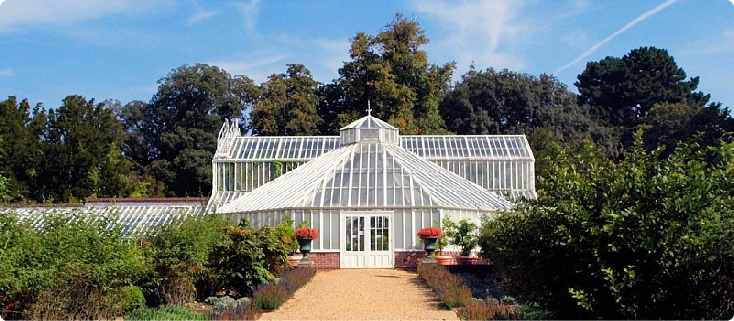



The Parish Church of St George the Martyr, Waterlooville

Our Vital Moon
Our first Speaker came on the 25th September, he was Mr. Robin Gorman and he gave us a talk and slide show titled “Our Vital Moon”. His previous talk was way back in 2001.
Robin works at Clanfield Observatory which is situated at Hinton Heights, at the top of Hinton Manor Lane in Clanfield.
At the Observatory is a 24 inch Telescope, which will shortly be replaced by a new one coming from Germany and costing £100,000.
The Moon is the Earth’s only natural satellite. The Moon’s current orbital distance is about thirty times the diameter of Earth, causing it to have an apparent size in the sky almost the same as that of the Sun.
Theia is a hypothesized ancient Planet in the Early Solar System that according to the Giant Impact Hypothesis collided with the early Earth around 4.533 billion years ago.
The Moon was formed out of the debris left over from the collision between the Earth and an astronomical body the size of Mars.
The average distance between Earth and Moon is approximately 30 times Earth’s diameter.
The discovery of large solid particles in the clouds of Venus is one of the most significant findings of Pioneer Venus because it means that a substantial mass of the clouds is composed of a material other than sulphuric acid.
Mars has an axial tilt of 25.19' quite close to the value of 23.44' for Earth, and thus Mars has seasons of Spring, Summer, Autumn, Winter as Earth does.
As seen from the Earth, a Solar Eclipse is a type of Eclipse that occurs when the Moon passes between the Sun and Earth, and the Moon fully or partially blocks the Sun. This can happen only at New Moon, when the Sun and the Moon are in conjunction as seen from Earth in an alignment referred to as Syzygy.
This was a very interesting talk.
Explore Staunton Way
On the evening of the 23rd October, Mr. Arkle came to give us a talk and slide show. The talk was titled “Explore Staunton Way” SE Hants.
The Staunton Way is a 8.5 to 20.5 Mile route from Queen Elizabeth Country Park to Staunton Country Park near Havant.
It is named after Sir George Staunton, an early 19th Century Portsmouth MP who created a Country Estate, which now forms the Staunton Country Park. You can walk the whole route or one of the six sections. The route is well sign posted with the logo of a roe deer on a green arrow.
There are two connecting links indicated in blue. One at Chalton and one at Finchdean, which allow you to choose from a number of shorter circular routes. Chalton is a small village, the Red Lion Public House is believed to be the oldest in Hampshire, dating from the 16th century, though possibly earlier. The Manor of Chalton occupied a large area from Blendworth to Clanfield and belonged to Earl Godwin passing to his Son Harold in 1053.
In Chalton stands St. Michael’s Church and looking from the Church you can see Windmill Hill which is a Chalk Hill running alongside the A3(M) overlooking Chalton to the East and Clanfield to the West. The Windmill is a Grade II listed building and lay derelict until the late 1970’s, when it was restored and converted into a private residence.
In 1780 it was bought by Jervoise Clarke-
From Chalton we travel onwards and reach Idsworth. Standing alone amid the fields of Old Idsworth and Heberden’s Farm is the little Chapel of St. Hubert. The Chapel stands some distance from the road adjoining the site of the Old Manor House of Idsworth, of which only the stables, coach house and walled garden remain.
Next is the village of Finchdean, where the Iron Foundry was set up in 1816 by John Cannings. The only thing which can still be seen in the village is the anvil and that is all that remains of the ironworks.
In 1836 John Cannings built some cottages in Dean Lane End and which I believe still stand there today.
Also in the village is The George Public House. It dates from the 18th century. The Staunton Way path continues behind the Pub, climbs steeply south to Wellsworth Lane, once an ancient Green Lane, where a Roman building and cremation burial site have been found. Then proceed to walk across the golf course and around the edge of the village of Rowland’s Castle.
The Way passes the entrance to Havant Thicket, once part of the ancient Forest of Bere.
At the edge of the Thicket you can see the private lodge that once stood at the North Gate to the Staunton Estate.
Sir George Thomas Staunton was born in 1781. He had been looking for a country home for some years before his permanent return from China. In 1820 he purchased the Leigh Estate which included what was to become Staunton Country Park.
From 1829 until 1856 he was a member of the Society of Dilettanti. He had never married. He left his Leigh Park House to his cousin. He died in August 1859.
In Staunton Country Park there is an Ornamental Farm, an Ornamental Lake, Follies, Maze, Walled Garden and Glasshouses. The Temple was a Memorial Commissioned by George Staunton in 1824 with a large Memorial Urn at its centre. The Temple was removed when William Henry Stone had his new home constructed on its site.
Stansted House lies within the Parish of Stoughton near the Village of Rowlands Castle. The House began as a hunting lodge in the 11th Century. The Chapel of St. Paul was built by Lewis Way. The Chapel which stands on the site of the first Great Stansted House (ruined in the Civil War) needed urgent work to its ancient locks and east window, which because of its subject matter and rare technique, is unique in an English Church.
The attractions on offer at Stansted are Funky Farm Shop, Maze, Miniature Railway and Garden Centre.
This was a very interesting talk, and it would be really worth doing the walk and seeing all the places along the route.
Priscilla Barlow.
Christmas Edition 2014
St George’s Ladies Group

The Victorian Glasshouse at Staunton Park